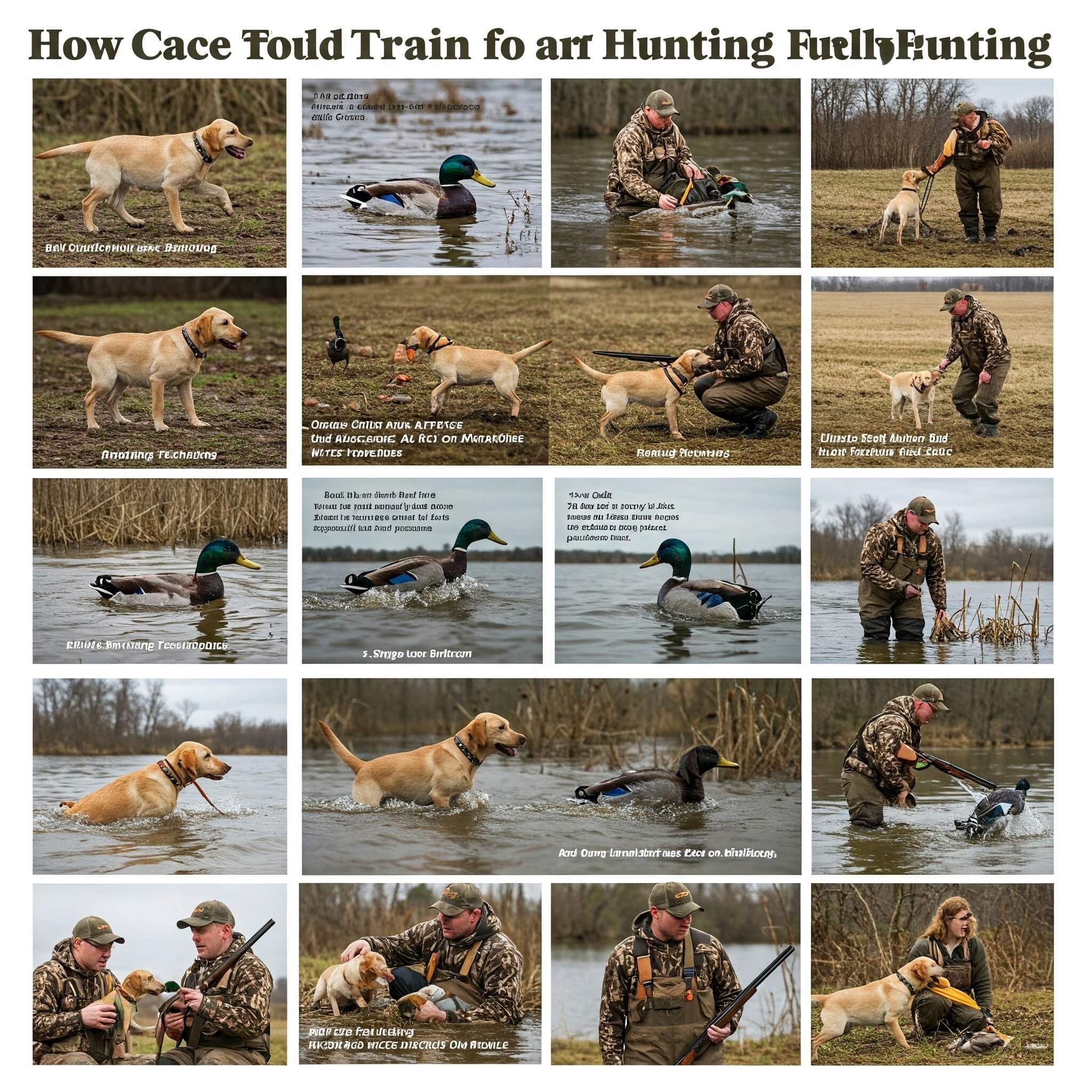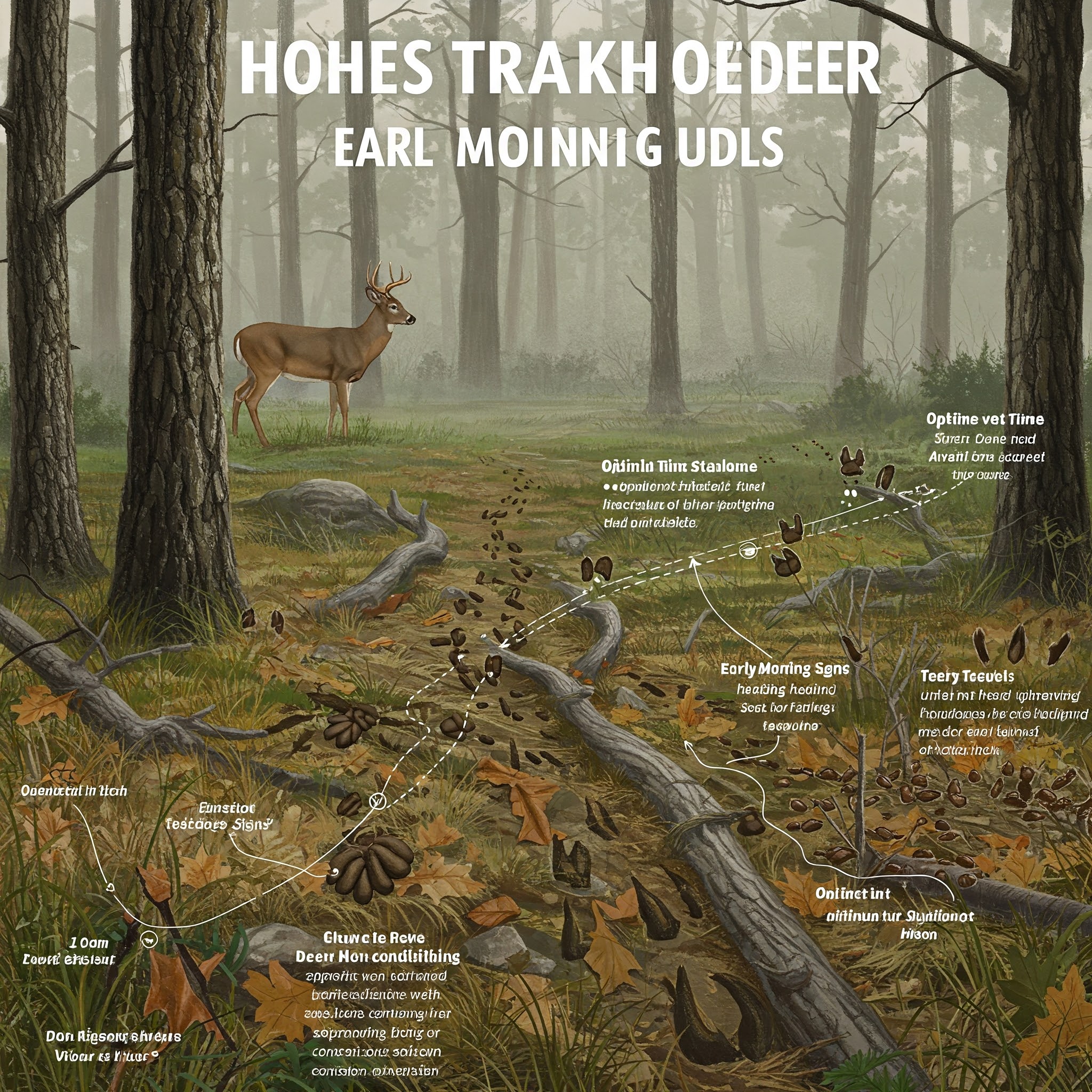Hunting with a dog is perhaps the most enjoyable experience for hunters and outdoorsmen. With a well-trained dog, you will easily recover ducks and have a more enjoyable hunt. You are probably curious about how to train a dog for duck hunting; this 3000-word guide contains step-by-step instructions in simple, human-like terms. With practical tips, clear instructions, and a focus on building a strong bond with your dog, you’ll learn how to turn your pup into a skilled hunting partner. Let’s dive into the process of how to train a dog for duck hunting!
Why Train a Dog for Duck Hunting?
Training a dog to hunt ducks isn't about having them retrieve, it's about building a strong partner capable of enduring the tests of wetlands, icy water, and varying conditions. A duck-hunting dog is capable of:
Getting downed ducks in efficiently quickly, even under difficult weather.
Serving as a timesaving and labor-saving asset in hunting.
Augmenting the general hunting experience through enthusiasm and aptitude.
Before we jump into how to train a dog for duck hunting, let's discuss the fundamentals, such as selecting the proper breed and recognizing what makes an excellent duck-hunting dog.
Choosing the Right Dog for Duck Hunting
Not all dogs are suitable for duck hunting, therefore choosing the correct breed is the initial step in how to train a dog for duck hunting. Labrador Retrievers, Golden Retrievers, Chesapeake Bay Retrievers, and Boykin Spaniels are good choices due to their retrieving nature, water-resistant coats, and water affection. This is what to observe:
Temperament: An ideal duck-hunting dog is willing to please, trainable, and full of energy.
Physical Characteristics: Find a dog with sturdy build, strong stamina, and a coat capable of withstanding cold, damp weather.
Instinct: Naturally retrieving breeds will be easier to train.
If you do have a dog, don't panic! Lots of mixed-breed dogs can be great at duck hunting if they are properly trained. It all starts with a water-loving dog that is eager to work. Now let's learn to train a duck hunting dog in steps.
Step 1: Build a Strong Foundation with Basic Obedience
Before diving into specialized skills, your dog needs to master basic obedience. This is the cornerstone of how to train a dog for duck hunting. A dog that listens to commands like “sit,” “stay,” “come,” and “heel” will be easier to train for advanced tasks. Here’s how to get started:
Teach Basic Commands
Sit: Train your dog to sit on command through treats and reward. Train in various settings to make sure they obey regardless of where you are.
Stay: Begin with brief periods and progressively lengthen the time your dog remains stationary.
Come: This is essential for safety while hunting. Train recall in a fenced area or with a long lead.
Heel: Your dog must walk quietly alongside you, particularly when heading to a hunting location.
Use Positive Reinforcement
Reward your dog with treats, praise, or playtime when they comply. Avoid rough corrections since they can scare your dog or make them resistant. Consistency is essential in learning how to train a dog for duck hunting.
Practice Daily
Spend 10-15 minutes daily on obedience training. Short, fun sessions keep your dog engaged and prevent boredom. Once your dog is reliable with basic commands, you’re ready to move on to hunting-specific skills.
Step 2: Introduce Your Dog to Water
Duck hunting frequently means wetlands, marshes, and cold water, so your dog should be happy to swim. This is a key aspect of how to train a dog for duck hunting. If your dog does not want to get into the water, go slow building confidence.
Begin with Shallow Water
------
------
Get a peaceful, shallow pond or lake.
Make your dog enter the water by throwing a favorite toy or treat on the water's edge.
Move slowly in deeper water as they become at ease.
Make Swimming Enjoyable
Use a flotation toy to encourage your dog to swim.
If they're apprehensive, join them in the water—you can be a source of comfort.
Praise them vigorously when they swim.
Increase Stamina
Duck hunting involves getting dogs to swim for long distances, at times in cold water. Gradually increase the swimming distance and duration to acclimatize them to actual hunting. Always keep an eye on your dog and steer clear of strong currents or dangerous conditions.
Step 3: Teach Retrieving Skills
Retrieving is the core of training a dog to hunt ducks. Your dog must retrieve ducks and bring them to you without harming the bird. Here is how to teach this key skill:
Begin with a Dummy
Use a training dummy or bumper (a soft, bird-shaped item) as a substitute for a duck.
Throw the dummy a short distance and invite your dog to retrieve it.
Reward them when they return it and put it in your hand.
Introduce the "Hold" Command
Teach your dog to hold the dummy lightly in their mouth without chewing.
Use the word "hold" and reward them for holding the dummy steady.
Increase the time they hold it gradually.
Practice in Different Environments
Begin in your backyard, then progress to fields, woods, and by water.
Throw the dummy into shallow water to add swimming and retrieving.
Variation in distance and terrain is necessary to mimic actual hunting conditions.
Patience and consistency are crucial in the process of teaching retrieving. Your dog will learn to relate fetching with fun and rewards over time, and thus be enthusiastic about retrieving in the hunting process.
Step 4: Acclimatize Your Dog to Gunfire
Duck hunting is accompanied by loud sounds from shotguns, so your dog needs to be desensitized to gunfire. This is an important step in how to train a dog for duck hunting so that they remain calm and concentrated during a hunt.
Start Slowly
Begin with low-level sounds, such as clapping or banging pots, when your dog is playing or eating.
Gradually introduce louder sounds, such as a cap gun or starter pistol, at a distance.
Always follow the noise with something pleasant, such as treats or play.
Introduce Real Gunfire
Get a friend to fire a shotgun from a distance (at least 100 yards) while you play with your dog.
Gradually lower the distance as your dog acclimatizes.
Never do it too fast—gunfire fear can be difficult to shake if done too suddenly.
Practice in Hunting-Like Situations
Translate a hunt by having someone shoot while your dog retrieves a dummy.
Begin with the gunfire in the distance and move it closer step by step.
Reward calm behavior and quit if your dog indicates stress.
By the end of this step, your dog will be steady and concentrated even when a gun goes off close to him.
Step 5: Train for Blind Retrieves
In duck hunting, dogs will frequently have to bring back ducks they didn't see fall, referred to as blind retrieves. This is an advanced skill that is a fundamental component of how to train a dog for duck hunting. It takes trust, communication, and careful handling.
Teach Directional Commands
Use hand signals or verbal commands such as "left," "right," or "back" to direct your dog.
Begin in an open area with a visible dummy and lead your dog to it using signals.
Hide the dummy gradually so your dog is dependent on your directions.
Practice in Water
Throw a dummy into water out of sight of your dog.
Use hand signals to lead them to the dummy.
Reward successful retrieves with praise and treats.
Simulate Real Hunts
Have a friend hide a dummy in tall grass or water while your dog waits.
Lead your dog to the dummy with signals and commands.
Add distractions, such as decoys or other dogs, to make it more challenging.
Blind retrieves are not easy to learn, but they are a necessary skill for a duck-hunting dog to locate birds in difficult conditions.
Step 6: Introduce Decoys and Scents
Duck hunting incorporates the use of decoys and the bird's scent, so your dog should be comfortable around them both. This process in how to train a dog for duck hunting keeps your dog attentive to the task.
Get Your Dog Used to Decoys
Place a couple of duck decoys in your yard or in waters nearby.
Allow your dog to smell and explore them.
Practice retrieval in the vicinity of decoys to teach your dog not to heed them.
Introduce Bird Scents
Hide and Seek
Use a training scent or a genuine duck wing to introduce your dog to the bird smell.
Toss the scented object away and invite your dog to seek it out.
Scent work and retrieving drills can be added gradually.
Blend Decoys and Retrieves
Decoy Situation
Create a hunting-like situation with decoys in water.
Throw a dummy or scented object into water and invite your dog to bring it back.
Reward them for not paying attention to the decoys and concentrating on the retrieve.
How to train a dog for duck hunting this step aids your dog in remaining focused during actual hunts despite distractions.
Step 7: Practice Real Hunting Situations
With your dog having mastered the fundamentals, it's now time to put it all together. Practicing real hunts is an essential component of how to train a dog for duck hunting. It conditions your dog to the unpredictability of actual hunting expeditions.
Set Up a Mock Hunt
Set up a location that resembles a duck-hunting scenario, such as a pond or marsh.
Utilize decoys, dummies, and a friend to mimic shooting.
Practice sending your dog to retrieve while you provide commands.
Add Distractions
Add other dogs, people, or noises to simulate a hectic hunting day.
Practice blind retrieves and long-distance retrieves under these conditions.
Reward your dog for remaining focused and following commands.
Gradually Increase Realism
Use actual duck wings or frozen birds on retrieves.
Practice in inclement weather to acclimate your dog to fall and winter hunts.
Vary the time of day and weather conditions to create adaptability.
Your dog should be able to withstand the demands of a real duck hunt by the end of this step.
Step 8: Continue Training and Bonding
Training doesn't end when your dog is hunt-ready. Regular practice and a solid bond are the keys to success. This last step in how to train a dog for duck hunting keeps your dog sharp and enthusiastic.
Keep Up Regular Training
Practice retrieving, obedience, and hunting drills weekly.
Vary locations and situations to keep your dog interested.
Use short, enjoyable sessions to prevent burnout.
Strengthen Your Bond
Spend good time with your dog outside of training, such as playing fetch or walking.
Establish trust through positive, consistent interactions.
A good bond makes your how to train a dog for duck hunting dog more responsive on hunts.
Prepare for the Season
Monitor your dog's health and fitness prior to hunting season.
Make sure they have appropriate equipment, such as a neoprene vest for cold water.
Go over commands and skills in the weeks preceding your first hunt.
With proper maintenance, how to train a dog for duck hunting your dog will continue to be a good hunting companion for many years.
Common Traps to Avoid in Training a Dog for Duck Hunting
Mistakes can occur even with the best of intentions when learning to train a dog for duck hunting. Watch out for these pitfalls:
Rushing the Process: All dogs learn at their own pace. Hurrying too much can create frustration or fear.
Omitting Obedience: Basic commands are the building blocks of all hunting ability. Don't leave them out.
Omitting water comfort:how to train a dog for duck hunting If your dog is not comfortable in water, they will falter during hunts.
Harsh corrections: Negative reinforcement can shatter your dog's trust and drive.
Inconsistent training: Sporadic training causes confusion. Be consistent in your schedule.
Avoiding these pitfalls will place your dog for success.
Tips for Success in Duck Hunting with Your Dog
To conclude our guide to training a dog for duck hunting, how to train a dog for duck hunting here are some additional tips to guarantee a good experience:
Start Young: Puppies are simpler to train, but older dogs can be trained with patience.
Use Quality Gear: Spend money on sturdy dummies, a quality leash, and a hunting vest for your dog.
Join a Training Group: Local hunting clubs or trainers can provide guidance and resources.
Be Patient: Training is time-consuming, but the payoff is worth it.
Have Fun: Make training sessions fun for you and your dog.
Conclusion: Mastering How to Train a Dog for Duck Hunting
Learning how to train a dog for duck hunting is a process that takes time, patience, and commitment. By starting with basic obedience, building water confidence, teaching retrieving skills, and simulating real hunts, you’ll create a skilled and reliable hunting partner. Avoid common mistakes, stay consistent, and focus on building a strong bond with your dog. With these steps, you’ll be ready to hit the marshes together, enjoying the thrill of duck hunting as a team.
Whether you’re a seasoned hunter or a beginner, the process of how to train a dog for duck hunting is rewarding and fun. Get started today, and soon you’ll have a dog that’s not just a pet but a true hunting companion. Happy hunting!





